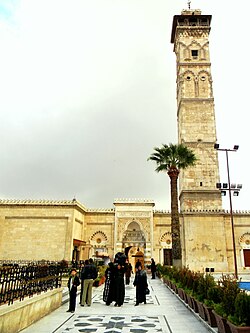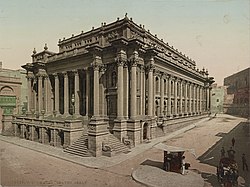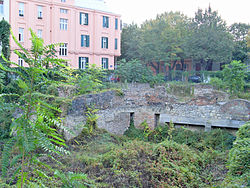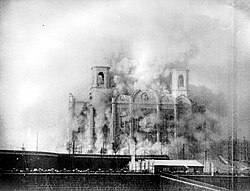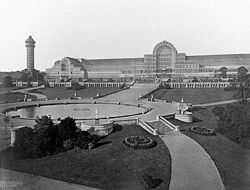This article has multiple issues. Please help improve it or discuss these issues on the talk page . (Learn how and when to remove these messages)
|
This is a list of cultural heritage sites that have been damaged or destroyed accidentally, deliberately, or by a natural disaster. The list is sorted by continent, then by country.
Contents
- Africa
- Egypt
- Libya
- Madagascar
- Mali
- Nigeria
- South Africa
- Sudan
- Zimbabwe
- Asia
- Afghanistan
- Armenia
- Azerbaijan
- Bahrain
- Bangladesh
- Cambodia
- China
- Georgia
- India
- Indonesia
- Iran
- Iraq
- Israel and Palestine
- Japan
- Lebanon
- Malaysia
- Maldives
- Myanmar
- Nepal
- Oman
- Pakistan
- Philippines
- Saudi Arabia
- Singapore
- South Korea
- Sri Lanka
- Syria
- Thailand
- Turkey
- Turkmenistan
- Europe
- Albania
- Austria
- Belgium
- Bosnia and Herzegovina
- Croatia
- Cyprus
- Czech Republic
- Denmark
- Estonia
- France
- Germany
- Greece
- Hungary
- Ireland
- Italy
- Kosovo
- Malta
- Netherlands
- Norway
- Poland
- Portugal
- Romania
- Russia
- Serbia
- Slovenia
- Soviet Union
- Spain
- Sweden
- Switzerland
- Ukraine
- United Kingdom
- North America
- Belize
- Canada
- Guatemala
- Haiti
- Honduras
- Mexico
- Nicaragua
- United States
- Oceania
- Australia
- New Zealand
- South America
- Argentina
- Brazil
- Peru
- Uruguay
- Venezuela
- See also
- References
- Sources
- Further reading
- External links
Cultural heritage can be subdivided into two main types: tangible and intangible. Tangible heritage includes built heritage (such as religious buildings, museums, monuments, and archaeological sites) and movable heritage (such as works of art and manuscripts). Intangible cultural heritage includes customs, music, fashion, and other traditions. [1] [2]
This article mainly deals with the destruction of built heritage; the destruction of movable collectible heritage is dealt with in art destruction, whilst the destruction of movable industrial heritage remains almost totally ignored.
The deliberate and systematic destruction of cultural heritage, such as that carried out by ISIL and other terrorist organizations, is regarded as a form of cultural genocide. [3] [4]






